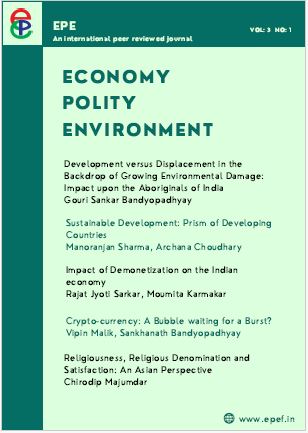Development versus Displacement in the Backdrop of Growing Environmental Damage: Impact upon the Aboriginals of India
Main Article Content
Abstract
Displacement and growing marginalization in the backdrop of man-made environmental changes throughout the world is a burning issue. The gross displacement without proper rehabilitation caused by several large scale government as well as non-government private projects like construction of SEZs, giant steel plants and mining in core tribal areas of eastern and southeastern India has drawn considerable attention in recent times. It is difficult to find any empirical study on rehabilitation and resettlement of displaced and dispossessed tribal people and the impacts of the eviction on their livelihood, earning physical cum emotional health. Indeed, the tribal population (‘Adivasis’) has been the disproportionate victims of development in India. For the last 117 years, land acquisition has been conducted in India leading multiple displacements under the aegis of the ancient colonial Land Acquisition Act of 1894. This paper highlights the sensational issues related to the abrupt change in environment and ecology and consequent displacement and sufferings faced by a section of aboriginal people in India. The hard truth is that despite the adoption of the National Policy of Rehabilitation and Resettlement 2007 the rehabilitation of the displaced tribal villagers has been totally dismal and shocking. Still it is a usual practice that the administration often seizes the land of the ‘Adivasis’, the most weakest section of people in India forcibly violating rehabilitation packages including “land for land” as provided under the Fifth Schedule of the Constitution of India. The paper also tries to raise the issue of adopting a full-fletched resettlement policy for the protection of the poor tribal folks who are living under a vulnerable condition in one hand and of arguing for environment-friendly sustainable development.
